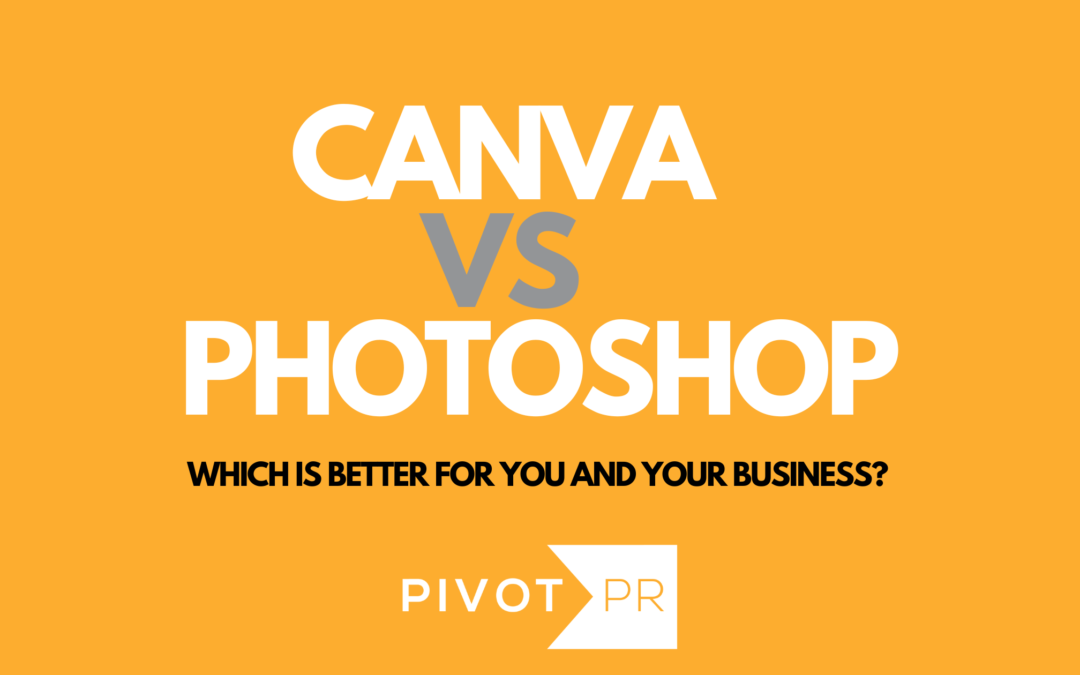
Blog
In the world of digital marketing today, eye-catching design and alluring aesthetics have become non-negotiable for increasing sales. Aside from capturing the attention of an audience, an attractive layout is essential for emphasizing messages, establishing brand identity and raising visibility.
Canva and Adobe Photoshop are both valuable platforms when it comes to cultivating content. But which is right for you and your business?
What is Canva?
Canva is a web-based graphic design application for design beginners. Users can take advantage of the generous tools and ready-to-use templates provided with the free version or upgrade to Canva Pro for $12.99/month. It is best-suited for online entrepreneurs, small-business owners and bloggers who like to get things done easily.
What is Adobe Photoshop?
Adobe Photoshop is a product of the Adobe family. It is a long-trusted tool used by design professionals for image creation, photo editing, raster images and more. This service requires an Adobe subscription, with the Photoshop program costing users $20.99/month.
The Comparison
| Canva |
Adobe Photoshop |
|
Pros
– Ease of use
– Ample pre-built template options
– Organized file management system
– No software to download or install
|
Pros
– Full layer management
– Create/edit images for both print and web
– Abundance of tools for editing
– Vector-based software |
| Cons
– No vector graphics
– Overused template designs
– No option to download raw files
– Easy to misalign designs |
Cons
– Extremely high learning curve
– Expensive for occasional use
– Utilizes lots of disk storage space
– Mainly used as a desktop program |
In summary, Canva has emerged as a more simple, convenient option for users with little to no design skills. However, a more significant visual impact with very detailed and specific needs requires Adobe Photoshop. All things considered, both programs are versatile and robust in terms of their features and allow for the design of a variety of visual content.
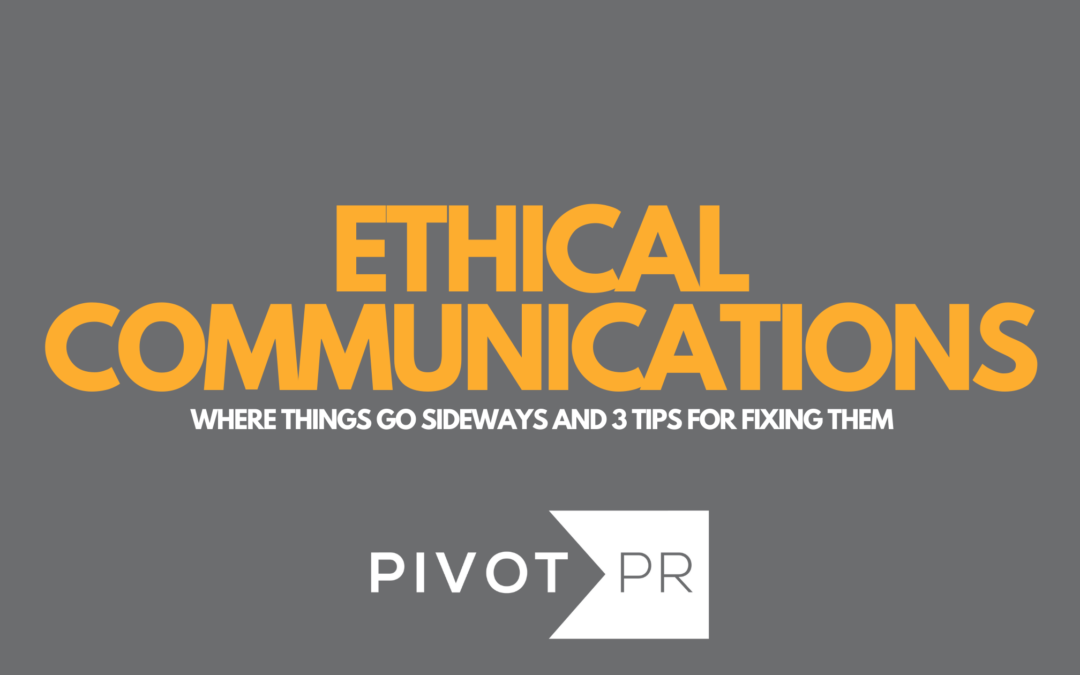
Blog
In this increasingly digital age where the answer to any question lies at our fingertips, audiences are continually exposed to and processing communications. Engaging in ethical communications means being truthful, concise and responsible with one’s words and the resulting actions. One understands that messages must be conveyed and expressed effectively and that resulting actions (or consequences) will be based on how the message was communicated. Thus, ethical communication delineates a framework of acceptable principles for transmitting messages that aligns with an organization’s overarching code of ethics.
When audiences perceive a message as unethical, they can typically identify one of three adversarial aspects:
- The message is untruthful. Audiences can frequently differentiate between a casual slip-up and an intentional effort by an organization to deceive or mislead, but the line has become increasingly blurred due to the massive quantity of information and opinions to sort through online. While it may be possible for audiences to forgive the former (to an extent), it is much more difficult to overlook the latter, making it crucial for organizations to pay heed to their messages and ensure it never occurs.
- The message is a violation of confidentiality. Exposing intimate details of an ongoing investigation or personal matter is an example of violating confidentiality. It is important not to make audiences uncomfortable and to maintain a positive and respectful tone whenever possible when relaying messages.
- The message is offensive. Organizations should shy away from sharing messages that involve potential debate over sensitive topics such as race, gender, income level, personal background and/or religion. Even with good intentions, personal stories and jokes have the most potential to backfire in this manner.
Organizations can consider these tips for ethical communications:
- Trust your instincts. Listen to your gut for what seems right and wrong, and how you expect a particular message would be received by specific audiences that are crucial to your organization’s success.
- Consider the repercussions. Once the internal barometer has been consulted, think carefully about the potential reaction to the message. In public relations, it is vital to remember that you represent the client but also your agency, the industry and the potential for future client relationships.
- Educate your team. Ensure that all are aware of your organization’s code of ethics. Consider challenging them with dilemmas and carry out “what-ifs” to establish a mutual understanding of procedures for different audience/client situations. While we should always hope for the best, there is also a professional responsibility to prepare for the worst.
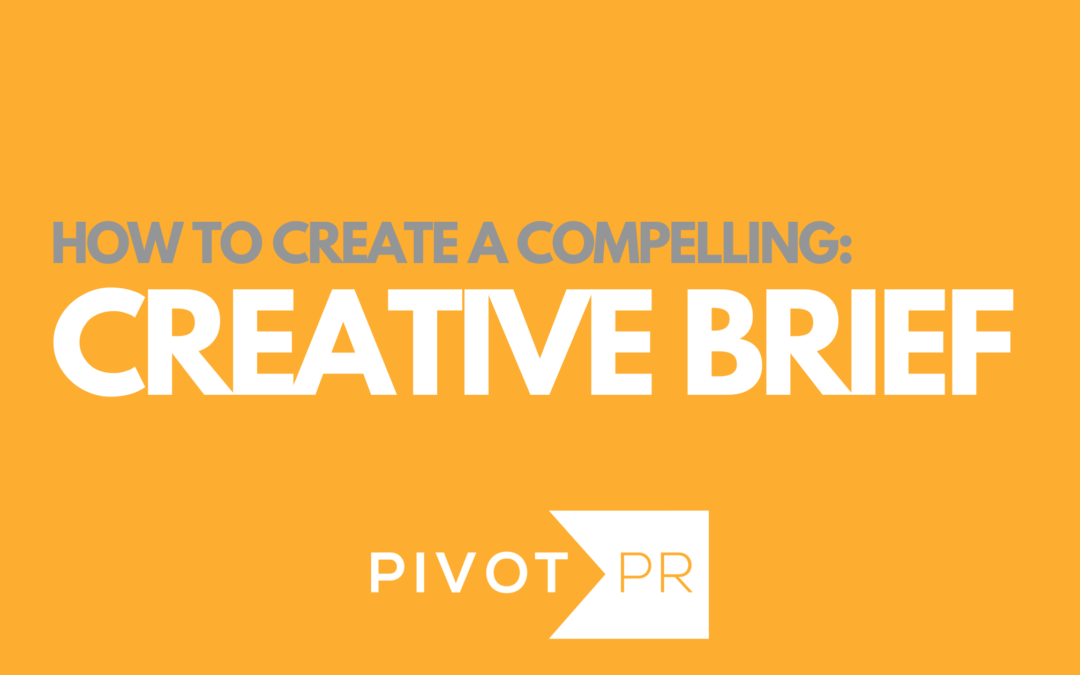
Blog
What is a creative brief and why is it useful?
Creative briefs allow all team members to be on the same page before the launch of a project by connecting creative work to broader goals. By outlining purpose, objectives and expectations before work begins, time is saved and confrontations during the review and approval process are avoided. Creative briefs are especially useful to agencies in understanding and implementing a client’s vision. They aid a wide variety of conceptual projects, including launch campaigns, website development, brochures and online ads on social media.
What does a creative brief contain?
- Title & Description – Provide a title and a short description of the campaign so clients and the creative team understand the intention of the creative work.
- Goals & Objectives – Define the specific business need and what the project will accomplish. Ensure that the listed goals are measurable. By the end of the project, look back at these goals and discern whether you’ve met your objectives.
- Target Audience – Outlining your target audience will help better tailor your project to them. Outline specific insights and demographics including age, gender, income level, marital status and education level. Note the audience’s values, interests, wants and needs. Understanding your audience beforehand will assist your team in relaying your intended message to the right people.
- Messaging & Tone – Clearly establish what messaging you want to deliver to your target audience. When they receive your message, how should they feel, think, want and do? What is their call to action? Include any brand guidelines or where to locate them. Following brand guidelines ensures the tone of your messaging matches that of your brand and keeps your messaging consistent across campaigns.
- Assets & Deliverables – Describe all creative assets and deliverables. Specify asset requirements such as dimensions, number of versions and design elements.
- Stakeholders – Identify all important stakeholders upfront. Cross-functional team collaboration is almost always necessary with creative work, involving more than one department. Each team member should know what they’re individually responsible for.
- Budget – Establishing a budget early on will help you stay in line financially and guide decision-making throughout the project.
- Timeline – Keep your team on track by establishing an early timeline. Note an anticipated start and end date, then fill in as many important dates as possible within. This allows all team members to plan accordingly and will notify you of any potential conflicts.
- Distribution process – Identify how your media assets will be communicated to your audience. Social media, email, blog and paid advertisements are just a few ways to distribute your messages.
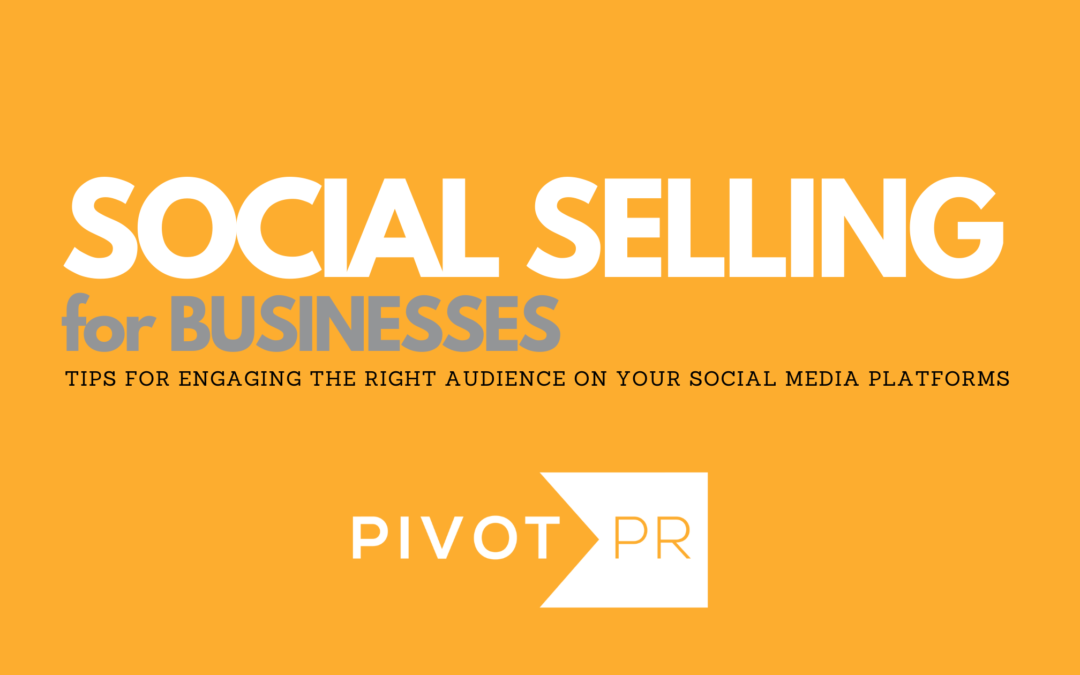
Blog
Social media platforms not only keep you connected with family and friends, but can also help you reach more people and grow your brand online. Through social media, you can:
- Observe your competitors and their best practices
- Create content for your target audiences
- Share content like blogs and other media from your own website
- Introduce your products and services
- Increase sales through social selling
Social media has become a vital part of our 21st century lifestyle, with social channels showing no sign of decline in popularity and prominence. In response, it is more important now than ever to plan on utilizing social media as a critical tool in growing a business.
What is social selling?
Social selling is a modern approach to sales that allows brands to hyper-target prospective customers while simultaneously establishing rapport with existing audiences. It focuses on the practice of building relationships through interacting with users and providing relevant, helpful content instead of cold pitching and spamming your messages into the online abyss.
3 Reasons Why Social Selling is Beneficial for Your Brand
- Increases brand visibility – Continuously sharing relevant, helpful content will attract prospective audiences willing to engage with you. No brand visibility means no exposure to potential customers and opportunities.
- Drives higher-quality leads – To go along with brand visibility, higher-quality leads come from investing your time and energy into building genuine connections with prospective audiences and gaining their trust.
- Credibility – Build social credibility within your industry via social media networks to nurture relationships and connect with prospective customers. Position yourself to have influence and increased levels of perceived value among users.
How To Measure Social Selling
The social selling index (SSI) is a metric used to measure the impact of a brand’s social selling efforts. It determines how well you are:
- Establishing a professional brand with a well-managed profile.
- Finding the right people on the platform.
- Sharing relevant, conversation-inspiring content.
- Building and strengthening relationships.
LinkedIn first introduced the concept of the SSI and combines four components to establish a score. To find your LinkedIn SSI score, sign into your account and navigate to your Social Selling Index dashboard.
Twitter is also a great network for social selling. Twitter Lists make it possible to group users together, based on company, industry or geographical location to monitor their specific content. Key Twitter Lists to focus on when social selling on the platform includes existing customers, prospective customers and competitors.
Instagram can be utilized for social selling by tracking engagement with your content relative to your follower count. This can be measured using Sprout Social, a software that allows you to easily manage your social media accounts. Within Sprout, navigate to the Reports tab and under Instagram Reports, click Instagram Business Profiles, where you can find your engagement rate calculated at the bottom of the Overview tab.
Facebook engagement can be measured using Facebook Audience Insights, where the metrics can be found under the Content tab. And in Creator Studio, overall engagement numbers can be found under the Insights tab while the post-level ones can be found under the Published tab.

Blog
Media kits, also known as press kits, are a set of promotional materials assembled by a company to provide basic information about itself to targeted audiences. Materials can consist of images, written content, files and any information related to a company, organization or individual. Designed to summarize a business, product or event, media kits are typically known as a “one stop shop” for media contacts when they need quick access to information.
Businesses can choose to present their media kits as responsive, online press pages or as downloadable presentation decks. No matter what format, they exist as a vital public relations tool to raise awareness, explain services and provide essential information to the media and/or prospective partners.
Key elements of a media kit include:
- Bio – A brief explanation of the company’s history to explain why and how the company was founded.
- Introduction Letter – A pitch to make the case for why the media should write about your company or why the client you’re soliciting should be interested in your services.
- Press Releases/News Clippings – Shows past coverage your company has received.
- FAQ Sheet – Answers the most common questions about your company.
- Samples of Company Work – For example, if you are endorsing a food blog, you might include relevant photography samples, final reports on brand deals, etc.
- Visual Aids – Show your statistics through the use of photos, videos, infographics, etc.
- Contact Information
3 tips for making your media kit stand out:
- Engage Your Audience – Establish credibility instantly with a standout media kit design and compelling headlines and graphics. Keep your pitch concise and get your key messages across quickly. Keep it interesting by avoiding long paragraphs. Opt for text boxes, images, bullets, subheadings and titles to capture and hold attention.
- Focus On Benefits – Forget the fluff. Focus on benefits for the consumer, reporter or client (the why) rather than features of your company (the what) to address the needs of the audience. Clearly explain how your company can best provide solutions to trending issues.
- Be User-Friendly – Ensure your media kit is downloadable, neat and easy to follow. Feature it on your website, located on the Contacts page, Services page or on a dedicated Media page. Include a link to allow the document to be downloaded as a PDF, especially when sending to potential partners.
Want to see a press kit that PIVOT PR has done for a client? JW Marriott Charlotte’s kit can be found HERE.
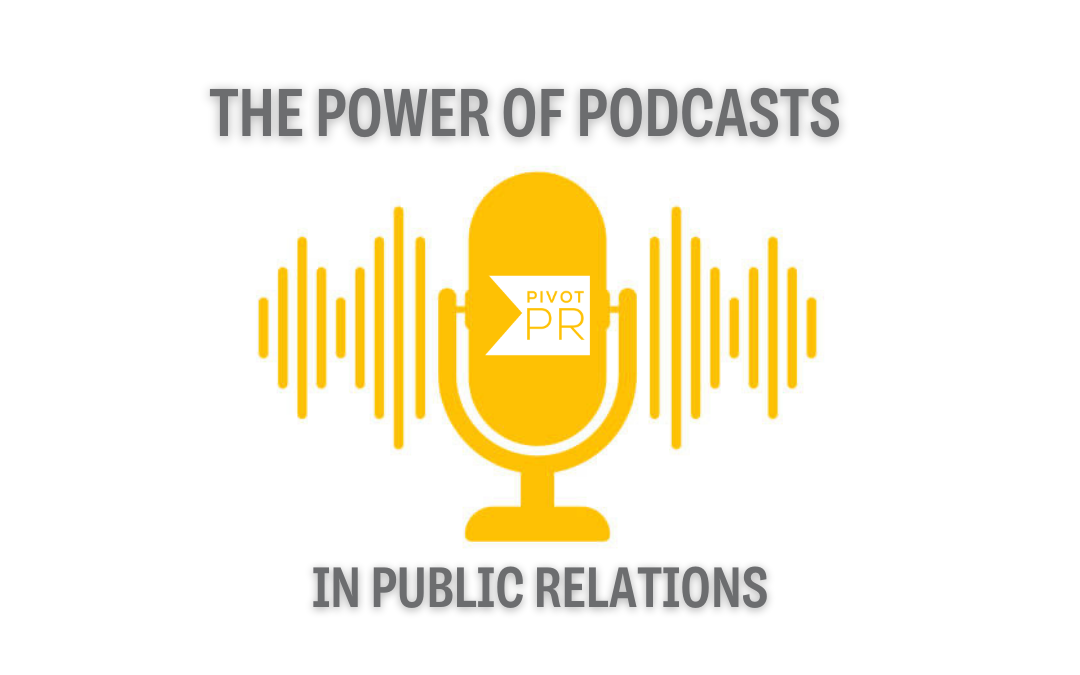
Blog
For decades, PR professionals have used classic tools such as press releases to get a brand or company’s message out to its publics. But there is an alternative option that is growing in popularity and quickly becoming accessible to millions of listeners around the world – podcasts. It’s time to consider the potential of podcasts to elevate your brand and harness their power to connect new audiences with your products or services.
For those who are unfamiliar, podcasts are on-demand digital audio files that can be streamed or downloaded to your smartphone, tablet or laptop (many at no cost). They are essentially a revitalization of talk radio that is both entertaining, informative and accessible from almost anywhere around the world.
According to Edison research, fifty-seven million Americans tune into podcasts monthly. Audio giants Spotify and Apple Music collectively offer over two million active podcasts in their catalogs. Since they can be accessed at the listener’s convenience, podcasts are a brilliant way to reach a time-starved audience. They allow you to speak directly to listeners while they’re multitasking – checking social media, going on a run or commuting to work.
Additionally, one of the best parts of podcasts is that listeners can search for your episode weeks, months, even years after it’s initially published. Promoting through social media using soundbites, images, snippets and teasers can further amplify your message once it is aired.
Here are a few additional tips to consider when adding podcasts to your communication strategy:
- Do your research. Choosing which podcast to target is very similar to analyzing traditional media. Note the show’s audience and recent conversations, then select the one whose subject matter best aligns with your company or brand’s message.
- Podcast listeners love a good story. Be sure to tie emotion to your message to make it more memorable for the audience.
- Focus on the customer. Discuss trends and research in your industry that the audience is likely to be familiar with. Even better, try examining industry problems where you can then tie your product or service in as a solution.
If you are interested in finding a podcast to participate in, let us know. We can work with you to find the best platform and audience to relay your message exactly as you intended.





